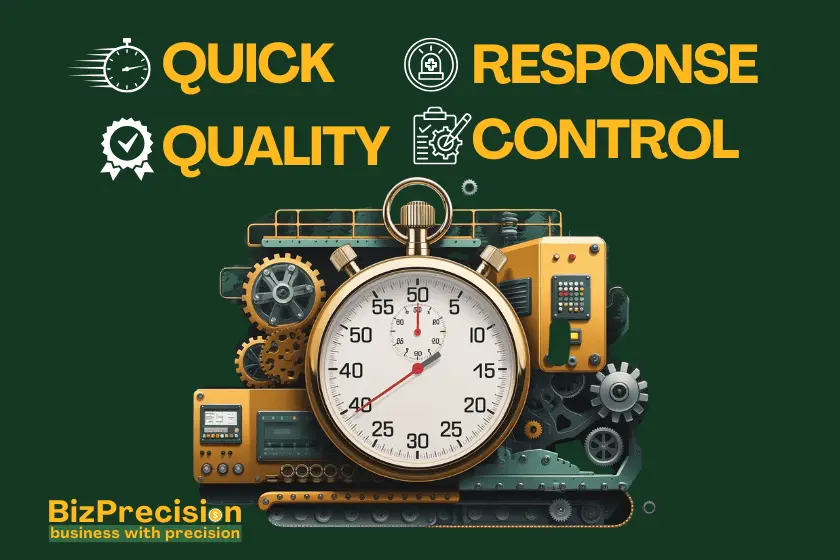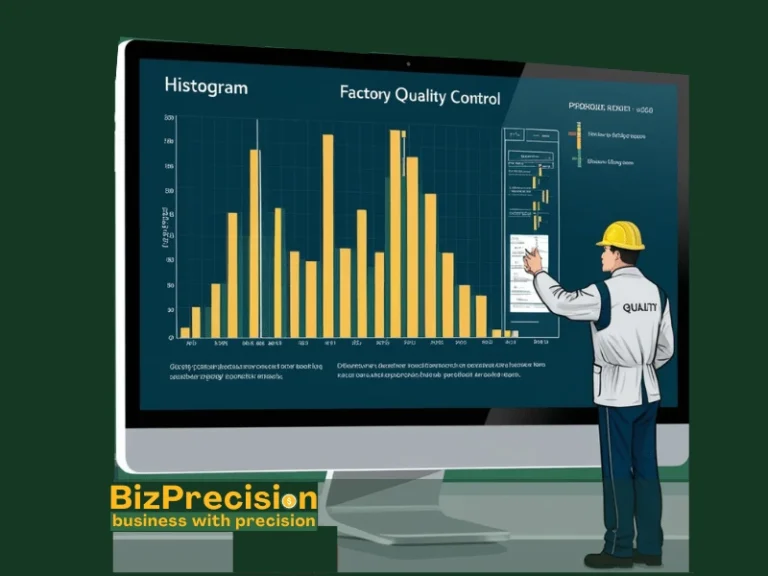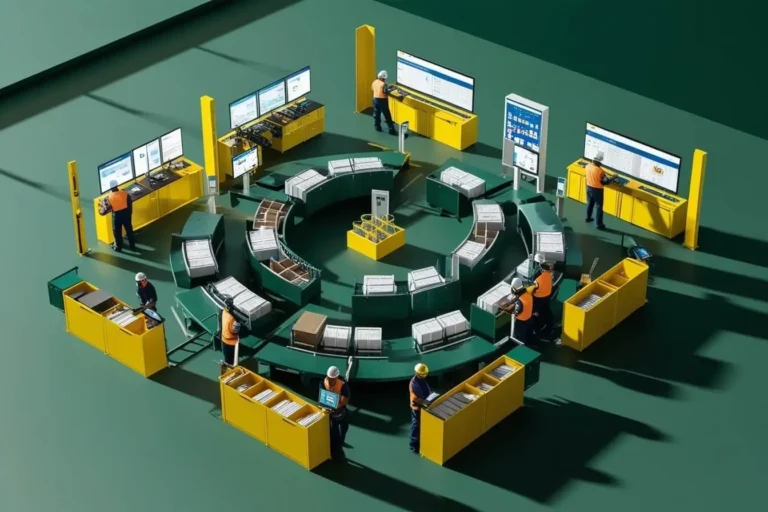Quick Response Quality Control (QRQC): Enhancing Efficiency and Accuracy in Manufacturing
The manufacturing industry is evolving rapidly, and so are the challenges of maintaining product quality. Traditional Quality Assurance (QA) and Quality Control (QC) methods, while foundational, are often too slow and reactive for today’s demands. Delays, defects, and dissatisfied customers are all too common.
Enter Quick Response Quality Control (QRQC), a forward-thinking approach that merges the best of QA and QC.
RQC is designed for the modern era, emphasizing real-time problem-solving, team collaboration, and continuous improvement. It’s not just about fixing issues—it’s about preventing them altogether.
What You’ll Learn in This Article:
- The core principles of QRQC and why it matters
- Real-world examples of QRQC in action
- A step-by-step roadmap for seamless implementation
Embrace QRQC now and gain a competitive edge in quality, efficiency, and customer satisfaction!
What is QRQC?
QRQC (Quick Response Quality Control) is a problem-solving methodology that focuses on rapid identification and resolution of quality issues.
Unlike traditional QC, which is reactive, QRQC is proactive, emphasizing prevention over correction. It combines the preventive nature of QA with the corrective aspects of QC, creating a system that empowers employees at all levels to take ownership of quality.
QRQC is built on the principles of Kaizen, the Japanese philosophy of continuous improvement. It fosters a culture where every team member is responsible for identifying and solving problems in real time. This approach not only improves product quality but also enhances operational efficiency and customer satisfaction.
Why QRQC Matters in Modern Manufacturing
In today’s competitive market, manufacturers must deliver high-quality products on time and within budget. QRQC helps achieve this by:
- Reducing Scrap and Rework Costs: By identifying and resolving issues early, QRQC minimizes waste and rework.
- Improving Production Efficiency: Real-time monitoring and quick problem-solving reduce downtime and bottlenecks.
- Enhancing Customer Satisfaction: Consistent product quality leads to happier customers and fewer returns.
- Building a Culture of Continuous Improvement: QRQC empowers employees to take ownership of quality, fostering innovation and collaboration.

The Core Principles of QRQC
QRQC is built on three foundational principles:
- Prevention Over Correction: Focus on preventing defects before they occur, rather than fixing them after production.
- Real-Time Monitoring: Use tools like control charts and automated inspection systems to track quality metrics in real time.
- Team-Based Problem Solving: Encourage cross-functional teams to collaborate on identifying and resolving issues.
The Historical Evolution of QRQC
QRQC originated in Japan during the 1960s as a response to the need for more efficient quality control methods. Toyota pioneered many of the principles behind QRQC, which played a crucial role in the rise of Japanese manufacturing excellence. In the 1990s, Nissan formalized QRQC to address challenges in its manufacturing processes, leading to significant improvements in quality and customer satisfaction.
Today, QRQC is widely adopted across industries, from automotive to electronics, proving its versatility and effectiveness.
Key Elements of a QRQC System
A successful QRQC system relies on three key components:
1. Real-Time Monitoring Tools
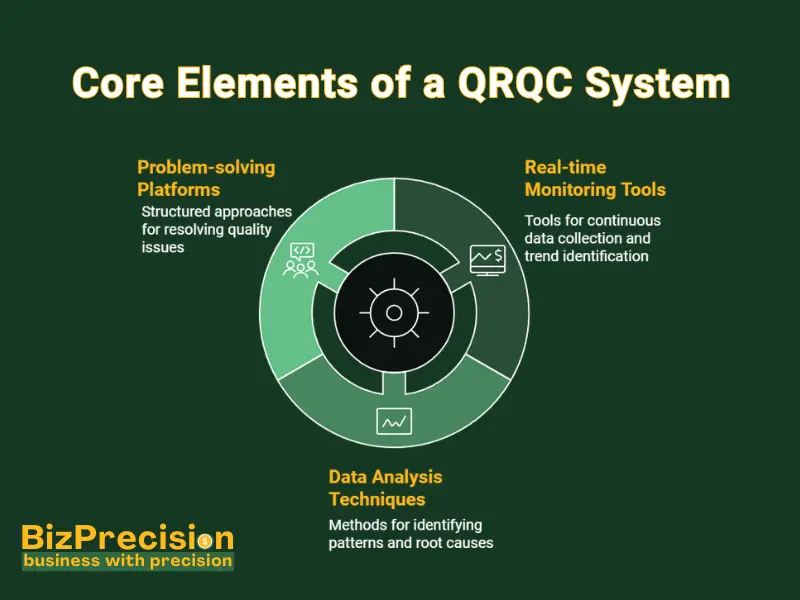
These tools enable continuous data collection throughout production. Examples include:
- Control Charts: Track process variations and identify trends.
- Automated Inspection Systems: Use sensors and cameras to detect defects instantly.
- Gauges and Sensors: Measure key parameters like temperature, pressure, and dimensions.
2. Data Analysis Techniques
Once data is collected, it must be analyzed to identify patterns and root causes. Common tools include:
- Pareto Charts: Highlight the most frequent issues.
- Fishbone Diagrams (Ishikawa Diagrams): Identify root causes of defects.
- Statistical Process Control (SPC): Monitor process stability and capability.
3. Problem-Solving Platforms
QRQC uses structured frameworks like the Plan-Do-Check-Act (PDCA) Cycle to guide teams in resolving issues systematically. This ensures a consistent approach to problem-solving and continuous improvement.
Real-World QRQC Success Stories
Case Study 1: ACME Manufacturing
Challenge: ACME Manufacturing faced chronic delays and high error rates in its assembly line.
Solution: By implementing QRQC, the company identified root causes in real time and addressed issues immediately.
Results: A 30% reduction in production time and a 20% decrease in defects.
Source: Smith, J. (2023). “ACME Manufacturing’s Lean Journey.” Manufacturing Today.
Case Study 2: Beta Electronics
Challenge: Beta Electronics struggled with quality inconsistencies in its circuit board production.
Solution: QRQC enabled real-time defect detection and correction.
Results: A 25% reduction in errors within three months and improved customer satisfaction.
Source: Johnson, L. (2022). “Beta Electronics: A Case Study in QRQC.” Quality Control Journal.
Case Study 3: FabricWorks
Challenge: FabricWorks experienced significant waste and rework in its textile production.
Solution: QRQC introduced a rapid defect detection and correction system.
Results: A 35% reduction in waste and a 20% increase in productivity within five months.
Source: Thompson, M. (2023). “Efficiency Gains at FabricWorks Through QRQC.” Textile Industry Review.
Detailed Implementation Steps for QRQC
Implementing QRQC requires a structured approach to ensure success. Here’s a step-by-step guide to help you get started:
1. Initial Assessment and Strategic Planning
- Evaluate Current Processes: Assess your existing quality control practices to identify gaps and areas for improvement.
- Set Clear Goals: Define measurable objectives for your QRQC implementation, such as reducing defect rates by 20% or improving production efficiency by 15%.
- Develop a Roadmap: Create a detailed plan outlining the steps, timelines, and resources required for QRQC implementation.
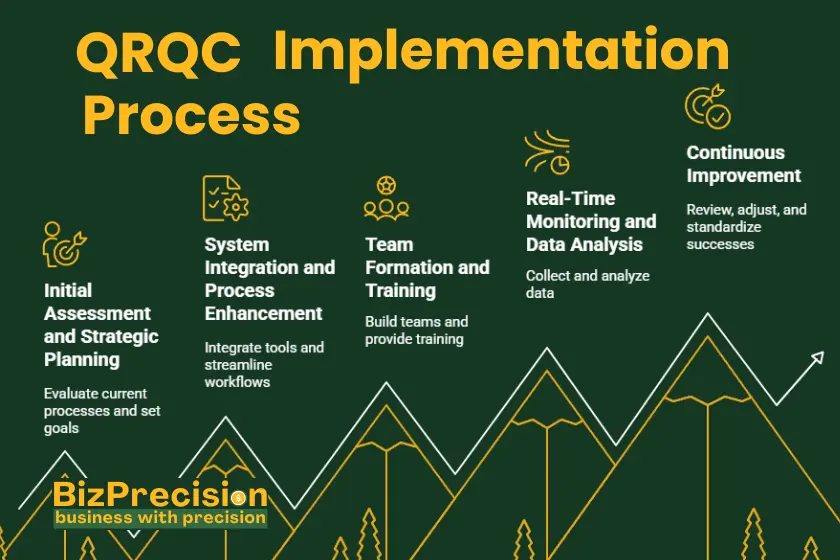
2. System Integration and Process Enhancement
- Integrate QRQC Tools: Incorporate real-time monitoring tools (e.g., control charts, automated inspection systems) into your production line.
- Streamline Workflows: Optimize processes to minimize errors and bottlenecks. For example, use Lean Manufacturing principles to eliminate waste.
- Standardize Procedures: Develop standardized work instructions to ensure consistency across teams.
3. Team Formation and Training
- Build Cross-Functional Teams: Assemble teams with members from production, engineering, quality control, and other relevant departments.
- Provide Training: Train employees on QRQC principles, tools, and techniques. Focus on problem-solving skills, data analysis, and teamwork.
- Foster Collaboration: Encourage open communication and knowledge sharing among team members.
4. Real-Time Monitoring and Data Analysis
- Collect Data: Use real-time monitoring tools to gather data on key quality metrics.
- Analyze Trends: Identify patterns and deviations using tools like Pareto charts and fishbone diagrams.
- Take Immediate Action: Address issues as soon as they are detected to prevent escalation.
5. Continuous Improvement
- Review and Adjust: Regularly evaluate the effectiveness of your QRQC system and make adjustments as needed.
- Standardize Successes: Document and standardize successful solutions to prevent recurring issues.
- Celebrate Wins: Recognize and reward teams for their contributions to quality improvement.
Benefits of QRQC
Implementing QRQC offers numerous benefits for your organization:
- Enhanced Product Quality: Proactively addressing issues leads to fewer defects and higher customer satisfaction.
- Improved Operational Efficiency: Real-time monitoring and quick problem-solving reduce downtime and bottlenecks.
- Cost Savings: Minimizing scrap and rework lowers production costs.
- Employee Engagement: QRQC fosters a culture of collaboration and continuous improvement, boosting morale and productivity.
Challenges of Implementing QRQC
While QRQC offers significant benefits, it’s not without challenges:
- Technological Barriers: Integrating real-time monitoring tools can be complex and costly.
- Cultural Resistance: Employees accustomed to traditional methods may resist change.
- Training Requirements: Successful QRQC implementation requires ongoing staff training and engagement.
To overcome these challenges:
- Invest in Technology: Allocate resources for advanced monitoring tools and software.
- Communicate Benefits: Clearly explain how QRQC will improve workflows and job satisfaction.
- Provide Continuous Support: Offer regular training sessions and create a support system for employees.
The Future of QRQC
QRQC is evolving with advancements in technology and industry needs. Here’s what the future holds:
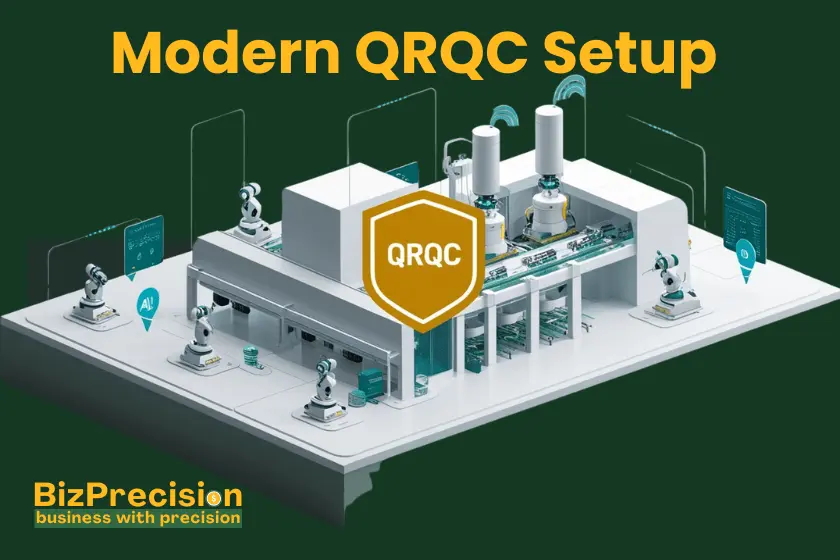
1. AI and Machine Learning
AI and machine learning are revolutionizing quality control, significantly enhancing Quick Response Quality Control (QRQC) through:
- Predictive Analytics: AI can analyze historical data to predict potential quality issues before they occur.
- Automated Problem-Solving: Machine learning algorithms can recommend solutions based on past successes.
2. IoT Integration
- Connected Devices: IoT-enabled sensors can monitor production lines in real time, providing instant feedback.
- Smart Factories: QRQC will play a key role in the development of fully automated, data-driven manufacturing facilities.
3. Industry-Specific Adaptations
- Custom Solutions: QRQC will be tailored to meet the unique needs of industries like healthcare, aerospace, and food production.
- Regulatory Compliance: QRQC will help manufacturers meet stringent quality standards in regulated industries.
4. Sustainability Focus
- Waste Reduction: QRQC will increasingly focus on minimizing environmental impact by reducing waste and energy consumption.
- Circular Economy: Manufacturers will use QRQC to support recycling and reuse initiatives.
Final Actionable Takeaways
Here’s how you can start your QRQC journey today:
- Assess Your Current Processes: Identify gaps in your quality control system.
- Set Clear Goals: Define what success looks like for your organization.
- Invest in Tools and Training: Equip your team with the right tools and knowledge.
- Build a Collaborative Culture: Encourage teamwork and open communication.
- Monitor and Improve: Continuously evaluate and refine your QRQC system.
FAQ’s
Conclusion
Quick Response Quality Control (QRQC) is revolutionizing manufacturing by combining real-time monitoring, data analysis, and team-based problem-solving. It’s not just a methodology—it’s a mindset that empowers organizations to deliver high-quality products efficiently and cost-effectively.
By implementing QRQC, you can reduce waste, improve efficiency, and build a culture of continuous improvement. The time to act is now. Start your QRQC journey today and stay ahead in the competitive manufacturing landscape.

